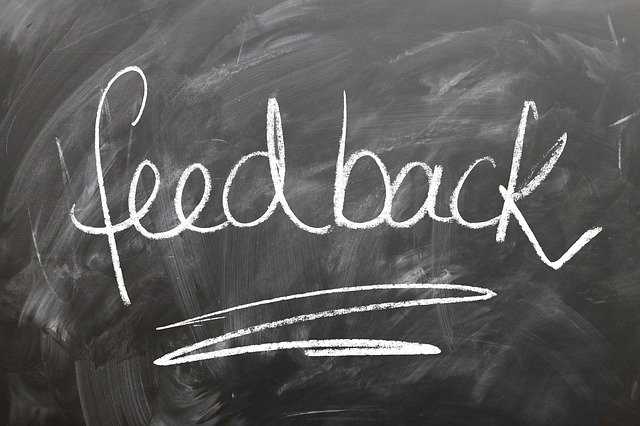8 Top Essential Components For Effective Communication

Communication is one of the major activities of every human. Man, being a social being must learn how to communicate effectively.
What is communication?
Communication has been given a different definition. But the general message still remains the same.
Communication, in general, is the act or process of utilizing words, sounds, signs, to exchange basic or complex information with another person.
It is simply the process of transferring information to another person without obstructions.

Top Eight Components of Communication
For a proper understanding of the process of communication, it is best to go through the top eight components that make up an effective communication process. Here are the components of communication in brief.
- Source
- Message
- Channel
- Receiver
- Feedback
- Environment
- Context
- Interference
All these communication components work harmoniously to give an effective process of communication. Now let’s go over each component and get to them better.
Components of Communication #1. Source
The source is the origin of the information. It is most times the starting point of the communication process. It carries out the imagination, creation, and sending of the message.
In the case of public speaking, the resource person is the source. The person passes the message through the act of passing the new information to the audience. The speaker can also use the following to pass information
- The tone of voice.
- Body language.
- Choice of clothing.
The three-point above are sources of information that are indirectly created by the speaker.
The first point to note is that the speaker usually starts by determining the message. This includes what they intend to say as well as how they are going to say it.
The second point to note is that the speaker needs to encode the message by selecting the best words that will give the audience an understanding of the intended meaning of the message.
The third point to note is that the speaker must present the message to the audience. This is the only way that they can get to receive the message.
The final point on the source of information is that as a speaker, you must watch how your audience may react to your message. It is very important because your main goal is to get them to understand your message.
Components of Communication #2. Message
The message is what the source gives out. As a public speaker, your message is what your audience will expect from you. Words are the foundation of the message. As a writer, speaker, you need to understand how to harmoniously bring the grammar of the language you are using together to get the expected result.

Components of Communication #3. Channel
The channel is the path in which the message gets to the audience or receiver. It is usually found between the source and the receiver. Whether you speak or write, you can do it without a proper channel.
Today there are so many channels available to us. The following are some notable channels that can be sued for effective communication
- Projector
- Television
- Internet
- Face to Face
- Telephone
- Books
- Magazines
- Letters
- Blogs
These channels make communication easy and most times very effective.
Components of Communication #4. Receiver
The receiver is the person that the source intends to pass the information or message to. Without the receiver, there would not be communication. As a speaker, you need to understand what your receiver is getting from you. Knowing the best channel that suits them is also very important.
Some may prefer that you speak to them, others may be written. It is your job to know the best channel to use.
Components of Communication #5. Feedback
Feedback is the natural response of the receiver to a message sent by the source. Every speaker must understand how to get real feedback from their receivers or audience.
The feedback can be verbal as well as nonverbal. In general, the feedback helps the speakers to make an adjustment to the way they are passing their message to the receivers.

Components of Communication #6. Environment
The component that is most visible to all is the environment. It is usually depicted by the setting of the place used for communication.
All the things that you can see and feel fall within the environmental component of communication.
This may be, the dressing of the speaker, the design of the book, the color of the auditorium, etc.
For example, it is very easy to find out that people do have an intimate discussion when they are closer to each other than when they are far apart.
Other times, if two people are far apart, they may only want to text or use phones to call, this as you know is influenced by the environment which is the distance between them.
The auditorium should be well checked by speakers to ensure effective communication.
Components of Communication #7. Context
The context is an integral part of the communication component that shows the expectation of the parties involved in the communication process.
The role of context is very important when we communicate across cultures.
Components of Communication #8. Interference
A lot of time, communication doesn’t go the way the speaker or source expects it to go. This obstruction is usually caused by Interference.
Interference is practically anything that reduces the effectiveness of the communication process. This can be as simple as noise to complex issues that may be disturbing the receiver.
You can now see that the communication process needs these eight components to be effectively carried out.
Author Bio
Contributor comprises full-time and freelance writers that form an integral part of the Editorial team of Hubslides working on different stages of content writing and publishing with overall goals of enriching the readers' knowledge through research and publishing of quality content.
Article Comments
No Comments!
At present there are zero comments on this article.
Why not be the first to make a comment?
Similar Articles
Sponsor
Search Articles
Experts Column
Latest Articles
Featured Articles
Most Popular Articles












